John DiPonziano, DDS, MAGDm DICOI
The conventional technique to augment a narrow ridge,with insufficient facial/lingual width, is the placement of particulate bone or a bone block on the facial aspect, and covering with resorbable or non-resorbable membranes. After sufficient time elapses to allow the newly grafted bone to become incorporated into the patient’s bony ridge, implants are placed and allowed to integrate for several months before the restorative phase begins. This technique – Guided Bone Regeneration (GBR) – is the typical grafting procedure used to build up deficient ridges in implant dentistry.
There is another type of ridge augmentation, that is gaining in popularity, that provides quicker implant integration and less overall treatment time than conventional GBR.
This is the Ridge Splitting technique which, as the name implies, cuts the bony ridge down the middle and allows room for fixture placement at the same appointment, (Fig. 1).
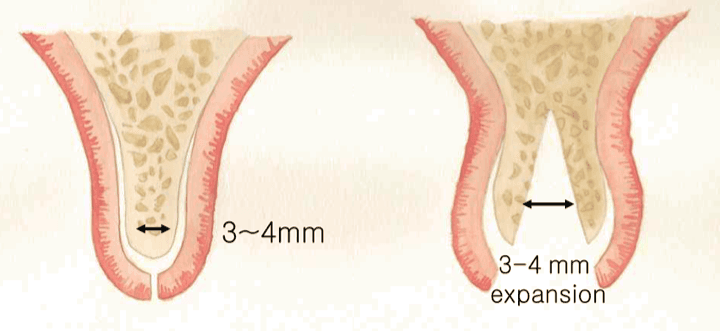
The Hiossen Esset kit is a specially designed set of instruments for fast, predictable, ridge splitting.
RIDGE SPLITTING TECHNIQUE:
- A crestal incision with vertical release is made and a full-thickness flap reflected, exposing the bone.
 Figure 2, Exposed ridge
Figure 2, Exposed ridge
- A narrow diameter drill prepares a minimal osteotomy, defining fixture placement and trajectory.
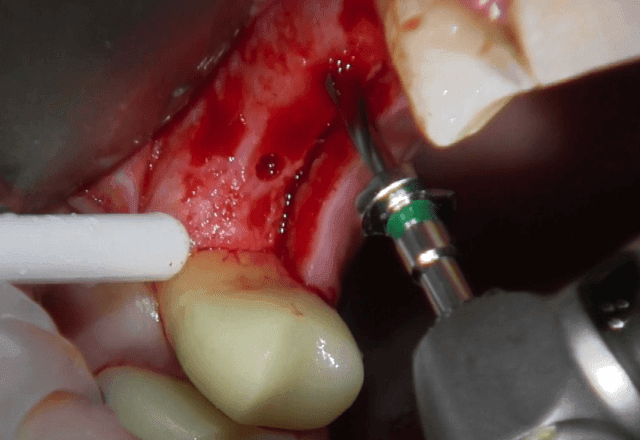 Figure 3, Narrow drill
Figure 3, Narrow drill
- Either a piezotome with a flat cutting tip, or an implant handpiece with a circular saw blade is used to cut into the occlusal aspect of the ridge to a depth of 8-10mm.
 Figure 4, Saw
Figure 4, Saw
- In addition, two vertical cuts, 4-5mm long and 2-3mm deep are made on the facial of the ridge, mesial and distal to the occlusal cut, and intersecting with it.
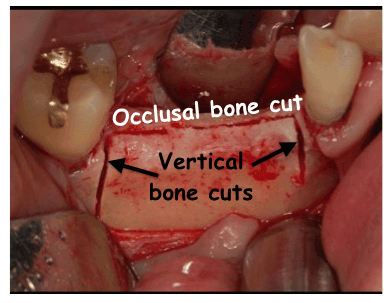 Figure 5, Vertical cuts
Figure 5, Vertical cuts
- Special Expansion Burs, (Fig. 6), are used at 30 rpm. to slowly spread the facial bone to allow implants to be placed into the newly expanded ridge, (Fig. 7). (The vertical bone cuts facilitate this facial movement of the bony plate).
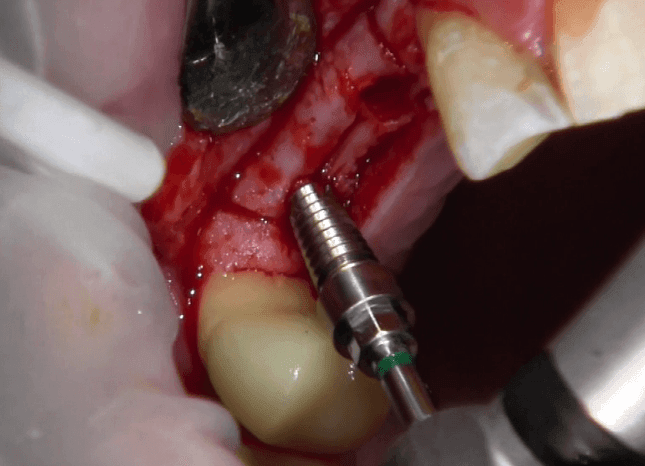 Figure 6, Expansion bur
Figure 6, Expansion bur
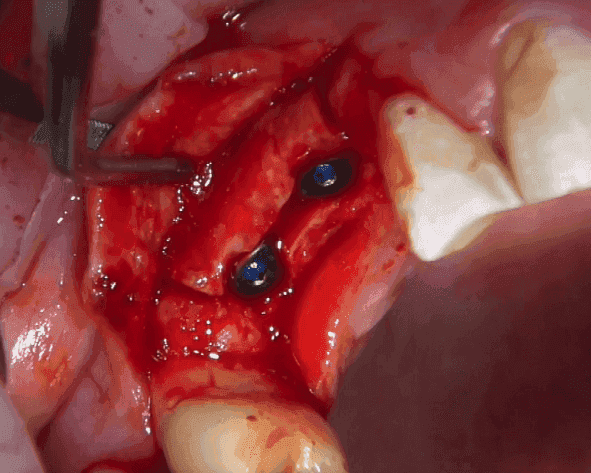 Figure 7, Fixtures in place
Figure 7, Fixtures in place
- After sufficient integration of about 2 months in the mandible and 4 months in the maxilla, second stage surgery is performed and the restoration phase begins.
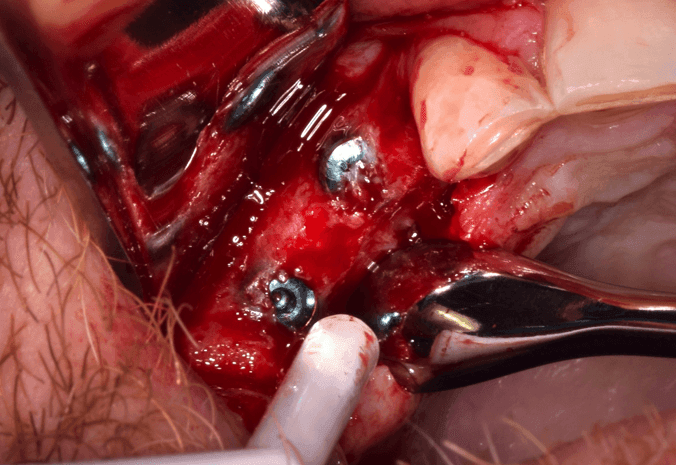 Figure 8, Integrated implants
Figure 8, Integrated implants
For the above procedure to be successful there needs to be at least 4mm of ridge width before splitting can commence. This allows 2mm of bone on the facial and lingual of the fixture when it is in place, (Fig.9).

If the ridge presents with less than 4mm, it can be reduced in height with special Flatting Burs. This will often widen the ridge to the proper dimension,(Fig.10). (If 4mm of width cannot be obtained with the Flattening Burs, then conventional GBR needs to be performed).

The Ridge Split technique, when indicated and properly performed,substantially reduces the overall treatment time,compared to GBR, since the fixture is placed at the same appointment as bone augmentation.
This reduction in chair time and surgical procedures also makes it a more desirable procedure from the patient’s point of view.

